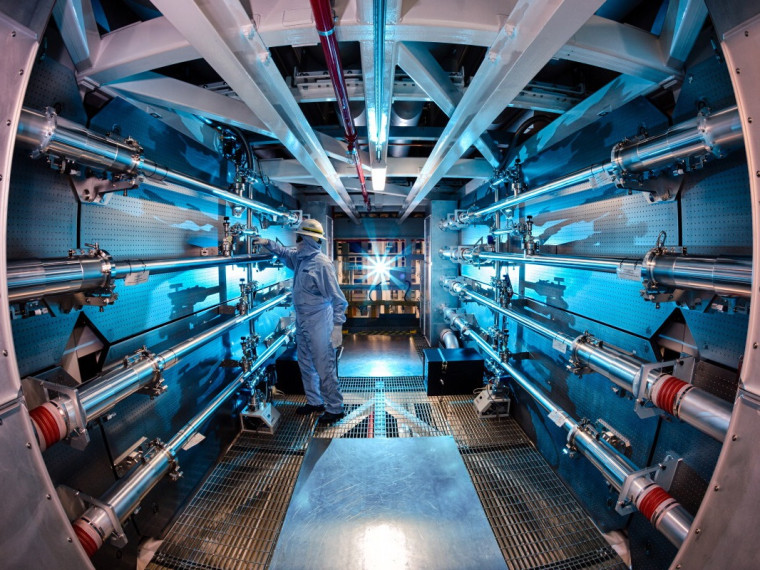The National Ignition Facility has reportedly reached a milestone in its $3.5 billion quest for nuclear fusion power — but for now, it can't follow up on the achievement due to the federal government shutdown.
The facility, housed at the federally funded Lawrence Livermore National Laboratory in California, blasts tiny capsules of deuterium-tritium fuel with 192 laser beams to produce a brief fusion reaction — similar to the hydrogen-to-helium reaction that powers the sun. The insights gained from NIF's experiments could someday point the way toward cheap, abundant energy.
NIF's primary goal is to achieve what's known as ignition — that is, a self-sustaining reaction that produces more energy than the amount of energy directed at the target fuel via the lasers. Achieving that goal has turned out to be much harder than expected, but significant progress has been made in the past few months.
This week, the BBC reported that during an experiment in late September, the amount of energy released by the reaction exceeded the amount of energy that was absorbed by the fuel capsule. Though that doesn't yet qualify as ignition, it's a first for NIF and arguably a kind of scientific break-even point.
The total energy of the laser shot was 1.8 million joules, and Science Insider reported that the neutron energy yield from the reaction on Sept. 28 was estimated at 14,000 joules. That's more than the X-ray energy that ended up being absorbed by the capsule, according to the NIF memo cited by Science Insider, but nowhere near 1.8 million joules. The reason for that disparity is that a significant amount of that energy was lost on the way to the capsule, due to inefficiencies in the laser-blasting system.
September's yield may not be ignition, but it represents a 75 percent improvement over the previous record output of 8,000 joules, set just a month earlier.
One big reason why the National Ignition Facility isn't making more noise about the achievement is that it's barred by the rules of the government shutdown from releasing such information through the normal channels. In fact, the Livermore Lab is preparing to close its doors on Oct. 21. Other national laboratories are facing closure either this month or in November.
NIF's researchers have been tweaking the design of their experimental apparatus to minimize the inefficiencies and maximize the yield of the fusion reaction. They want to continue doing so, as part of an effort that's meant to extend the energy frontier as well as safeguard America's nuclear stockpile. But it looks as if the next chapter in NIF's fusion quest will have to wait until Congress and the White House come to terms.
More about the fusion quest:
- Fusion dreams hit hard economic realities
- Simulations suggest fusion power will work
- NBC News archive on fusion research
Alan Boyle is NBCNews.com's science editor. Connect with the Cosmic Log community by "liking" the NBC News Science Facebook page, following @b0yle on Twitter and adding +Alan Boyle to your Google+ circles. To keep up with NBCNews.com's stories about science and space, sign up for the Tech & Science newsletter, delivered to your email in-box every weekday. You can also check out "The Case for Pluto," my book about the controversial dwarf planet and the search for new worlds.
